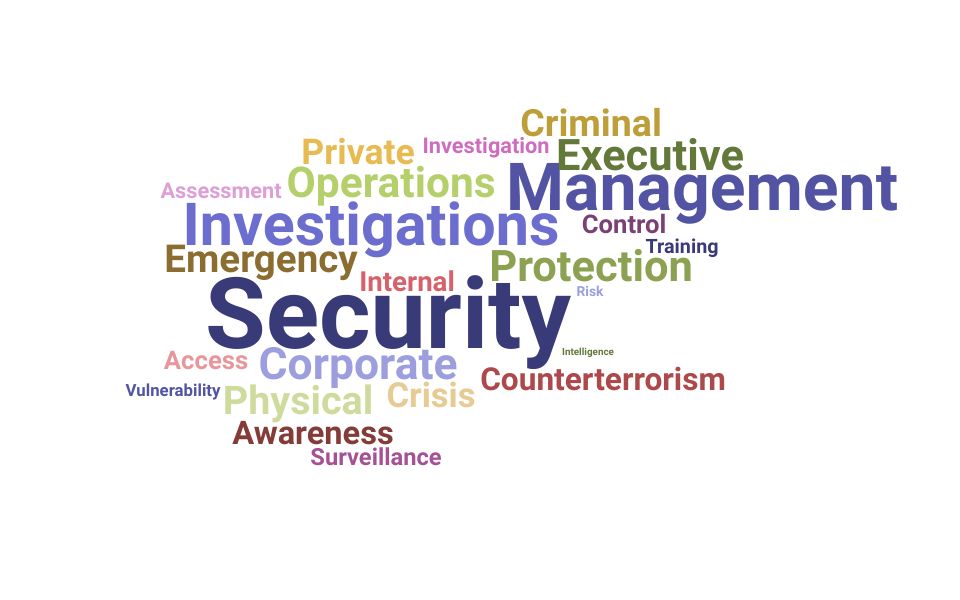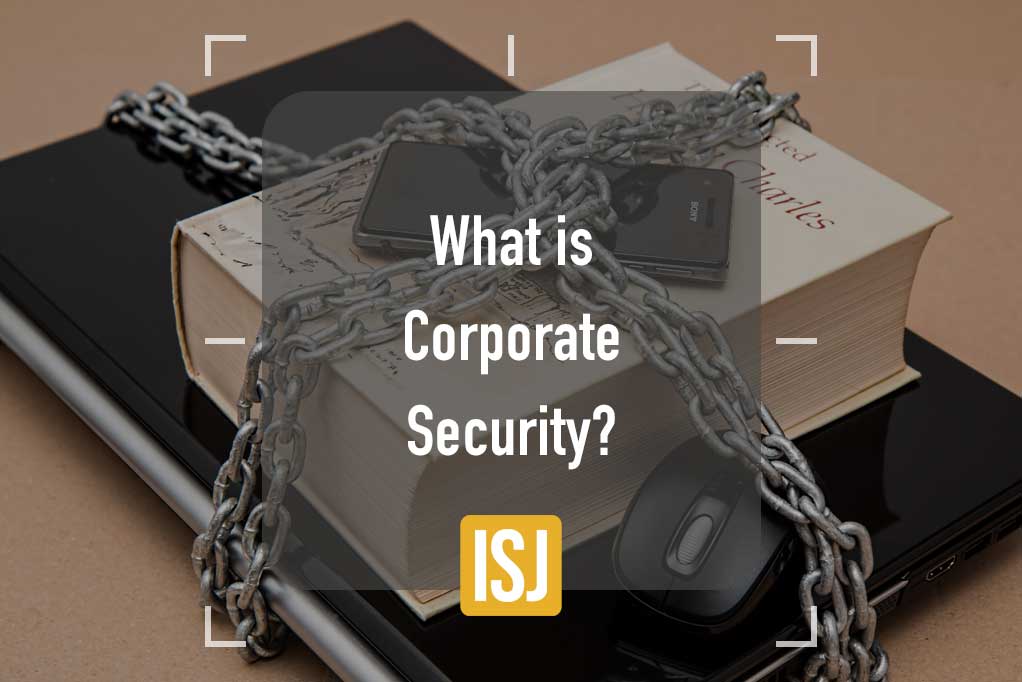Encouraging Your Organization with Ironclad Corporate Security Actions
Wiki Article
From Cybersecurity to Physical Steps: Strengthening Business Safety And Security in a Changing World
By incorporating the toughness of both cybersecurity and physical protection, firms can produce an extensive defense strategy that addresses the diverse array of hazards they encounter. In this discussion, we will certainly discover the transforming hazard landscape, the demand to integrate cybersecurity and physical safety and security, the application of multi-factor authentication measures, the relevance of staff member understanding and training, and the adaptation of security actions for remote labor forces. By taking a look at these essential locations, we will certainly acquire important understandings right into how organizations can reinforce their business safety and security in an ever-changing globe.Recognizing the Altering Threat Landscape
The evolving nature of the modern-day world demands a detailed understanding of the altering risk landscape for effective corporate protection. In today's digital and interconnected age, hazards to business security have actually become extra complex and innovative. As innovation advances and organizations end up being significantly reliant on electronic infrastructure, the possibility for cyberattacks, data violations, and various other safety violations has dramatically increased. It is critical for organizations to remain informed and adapt their security measures to resolve these progressing risks.One key aspect of understanding the altering risk landscape is acknowledging the different types of dangers that organizations deal with. Furthermore, physical risks such as theft, criminal damage, and company reconnaissance continue to be prevalent problems for businesses.
Tracking and examining the hazard landscape is essential in order to recognize possible dangers and vulnerabilities. This involves remaining upgraded on the most recent cybersecurity trends, analyzing hazard knowledge reports, and performing normal danger assessments. By recognizing the altering risk landscape, companies can proactively carry out suitable protection procedures to reduce risks and secure their possessions, reputation, and stakeholders.
Integrating Cybersecurity and Physical Safety And Security
Integrating cybersecurity and physical safety is essential for comprehensive business protection in today's digital and interconnected landscape. As companies increasingly count on technology and interconnected systems, the borders between physical and cyber dangers are becoming blurred. To effectively secure versus these risks, an alternative approach that integrates both cybersecurity and physical security procedures is essential.Cybersecurity concentrates on protecting digital properties, such as networks, systems, and information, from unapproved access, interruption, and theft. Physical safety and security, on the other hand, incorporates steps to secure physical possessions, individuals, and centers from vulnerabilities and hazards. By incorporating these two domains, companies can resolve vulnerabilities and risks from both physical and electronic angles, therefore boosting their overall safety and security pose.
The assimilation of these 2 disciplines allows for a more detailed understanding of safety threats and makes it possible for a unified feedback to incidents. Physical access controls can be enhanced by integrating them with cybersecurity protocols, such as two-factor authentication or biometric identification. Similarly, cybersecurity measures can be enhanced by physical protection actions, such as security cameras, alarm systems, and safe and secure accessibility factors.
.png)
Applying Multi-Factor Authentication Procedures
As companies progressively focus on comprehensive safety and security actions, one effective technique is the execution of multi-factor authentication steps. Multi-factor authentication (MFA) is a safety approach that requires users to supply numerous forms of identification to access a system or application. This technique includes an added layer of defense by combining something the individual understands, such as a password, with something they have, like a finger print or a protection token.By executing MFA, organizations can substantially boost their protection stance - corporate security. Traditional password-based authentication has its limitations, as passwords can be easily compromised or failed to remember. MFA reduces these dangers by adding an extra authentication element, making it a lot more tough for unapproved individuals to gain access to sensitive details
There are numerous kinds of multi-factor verification approaches available, consisting of biometric authentication, SMS-based verification codes, and hardware tokens. Organizations require to examine their specific demands and select the most appropriate MFA remedy for their needs.
Nevertheless, the implementation of MFA should be thoroughly prepared and performed. It is important to strike a balance between security and use to protect against customer irritation and resistance. Organizations ought to likewise consider potential compatibility concerns and offer sufficient training and assistance to make certain a smooth shift.
Enhancing Staff Member Recognition and Training
To reinforce business security, companies must focus on improving employee understanding and training. In today's swiftly advancing danger landscape, employees play an essential duty in protecting an organization's delicate information and possessions. Many safety breaches occur due to human mistake or lack of understanding. Companies need to invest in detailed training programs to enlighten their workers about possible risks and the best techniques for mitigating them.Efficient worker awareness and training programs should cover a vast array of subjects, including data defense, phishing strikes, social engineering, password hygiene, and physical security actions. These programs need to be tailored to the certain demands and responsibilities of various worker duties within the organization. Normal training sessions, workshops, and simulations can assist staff members establish the required abilities and knowledge to respond and recognize to safety dangers efficiently.
Furthermore, companies ought to urge a culture of safety and security recognition and offer ongoing updates and suggestions to keep employees informed regarding the current dangers and mitigation techniques. This can be done via interior communication networks, such as newsletters, intranet portals, and email campaigns. By promoting a security-conscious labor force, organizations can considerably decrease the chance of protection events and secure their useful properties from unauthorized gain access to or compromise.

Adapting Safety Procedures for Remote Labor Force
Adjusting company protection measures to fit a remote labor force is essential in guaranteeing the protection of sensitive details and possessions (corporate security). With the increasing pattern of remote work, organizations need to carry out appropriate safety and security actions to reduce the threats connected with this new means of workingOne critical facet of adjusting protection procedures for remote work is establishing protected communication channels. Encrypted check my reference messaging platforms and online personal networks (VPNs) can aid safeguard sensitive info and protect against unauthorized gain access to. In addition, companies ought to impose the use of strong passwords and multi-factor verification to enhance the safety and security of remote access.
Another vital factor to consider is the application of protected remote access solutions. This entails supplying workers with protected accessibility to company resources and data via online desktop framework (VDI), remote you could try these out desktop protocols (RDP), or cloud-based remedies. These modern technologies make sure that sensitive details stays protected while making it possible for workers to perform their duties efficiently.

Finally, detailed security awareness training is important for remote staff members. Educating sessions should cover best methods for safely accessing and taking care of delicate information, identifying and reporting phishing attempts, and preserving the general cybersecurity health.
Verdict
In conclusion, as the hazard landscape proceeds to develop, it is essential for companies to enhance their safety and security measures both in the cyber and physical domain names. Integrating cybersecurity and physical protection, discover this info here carrying out multi-factor authentication procedures, and enhancing employee understanding and training are necessary steps towards achieving durable business safety and security.In this conversation, we will explore the altering threat landscape, the demand to integrate cybersecurity and physical protection, the application of multi-factor verification procedures, the importance of staff member awareness and training, and the adjustment of security procedures for remote labor forces. Cybersecurity steps can be enhanced by physical safety and security actions, such as surveillance electronic cameras, alarms, and secure accessibility points.
As organizations significantly prioritize extensive protection measures, one efficient technique is the execution of multi-factor verification actions.In verdict, as the threat landscape continues to progress, it is crucial for organizations to enhance their security measures both in the cyber and physical domains. Integrating cybersecurity and physical protection, implementing multi-factor authentication steps, and improving staff member recognition and training are essential steps towards accomplishing robust business safety.
Report this wiki page